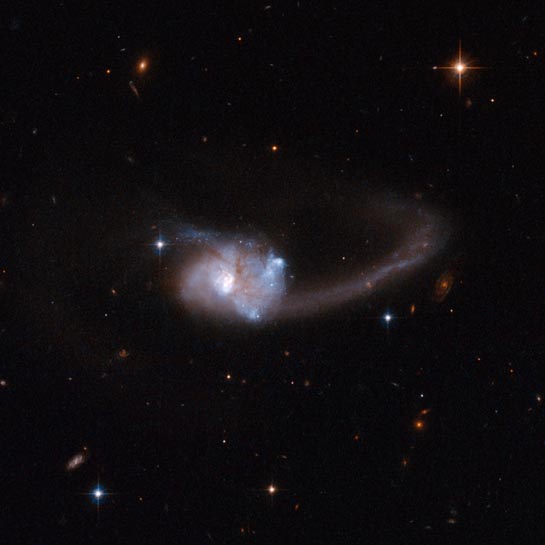
Interacting Galaxies
RA 20h 58m 27.02s Dec -42 38 58.2
Microscopium
550 million light-years (150 million parsecs)
ACS/WFC
March 27, 2002
35 minutes
F435W (B) and F814W (I)
NASA, ESA, the Hubble Heritage (STScI/AURA)-ESA/Hubble Collaboration, and A. Evans (U of Virginia, Charlottesville/NRAO/Stony Brook University)
April 24, 2008
ABOUT THIS IMAGE:
ESO 286-19 is a peculiar galaxy that consists of what were originally two disk galaxies that are now in the midst of an ongoing collision. It has undergone a burst of star formation that ended about eight million years ago. ESO 286-19 has a long tail to the right of the main body, and a shorter tail curving to the left. The presence of the tails is a unique signature of the merger process: gas and stars were stripped out by rippling gravitational pulls as the galaxies collided and the outer regions of the parent galaxies were torn off. These tidal tails can persist long after the galaxies have finally merged. ESO 286-19 is located 600 million light-years away from Earth and is an exceptionally luminous source of infrared radiation.
This
image is part of a large collection of 59 images of merging galaxies taken
by the Hubble Space Telescope and released on the occasion of its 18th
anniversary on April 24, 2008.